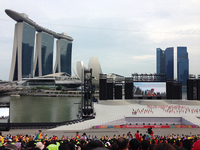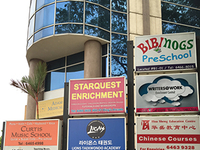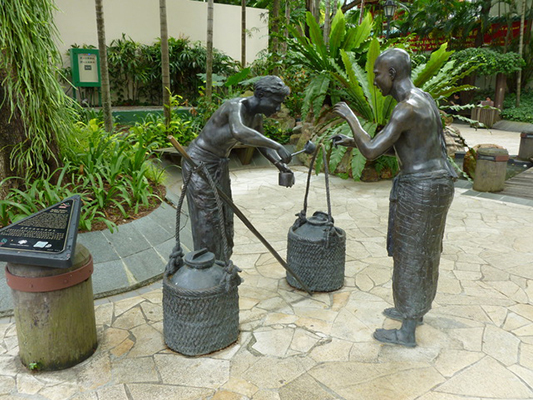Read more about Singapore Sociology

After Globalization
by Daniel P.S. Goh

After Secularism
by Francis Khek Gee Lim

After Meritocracy
by Youyenn Teo

After Lee Kuan Yew
by Vineeta Sinha
February 17, 2017
Speaking at a National Day rally in August 2016, Prime Minister of Singapore Lee Hsien Loong discussed race relations in Singapore and the call for minority representation at the highest levels of political office. Minority representation in this context pertained exclusively to race – not gender, not sexuality, or any other socially meaningful and intersectional categories. Interestingly, back in 1989, Lee’s father, former Prime Minister Lee Kuan Yew, insisted that Singapore was not ready for a non-Chinese Prime Minister; as late as 2008, the younger Lee said such an outcome was “possible but not soon” (The Straits Times, November 9, 2008). Ironically, two weeks after the 2016 rally, Singapore’s main English daily, The Straits Times, published an entire page titled Who Will Lead Singapore Next?, offering profiles of potential candidates to succeed Lee (September 4, 2016) – all ethnic-majority Chinese cabinet ministers.
Lee’s speeches reveal the sustained racialization of Singapore society. Far from being downplayed, the salience and visibility of race has been accentuated and heightened through social, political, and cultural policy, and remains significant in Singapore’s everyday life. Such hegemonic expressions of organizing social and political life stems from Singapore’s model of multiracialism; the categories “Chinese,” “Malay,” “Indian” and “Others” – officially condensed as CMIO – assign each racial category its own culture and language.
Built on legacies of British colonialism, CMIO multiracialism and meritocracy together constitute key defining ideological tenets of the accidental state that was formed by Singapore’s 1965 discharge from Malaysia – an expulsion that was itself the result of bitter communal disputes between Malaysia and Singapore over the preservation of rights for ethnic Chinese and other minorities. This framework became part of nation-building imperatives in post-independent Singapore: in its efforts to protect and legitimize Singapore’s survival as a small city-state, the government has emphasized conferring and guaranteeing equal status, treatment, opportunities, and respect to the different ethnic and religious groups. Such engagements with race ubiquitously translate into a range of educational and language policies, self-help groups, public housing allocation, population control, and political representation.
Given Singapore’s claim to an ostensibly race-neutral approach, the state is rendered as an equal and disinterested protector of race relations within the boundaries of national interests. At the same time, an arsenal of policies allows the state to reproduce specific racial proportions of the population. This racial arithmetic paradoxically ensures and maintains an ethnic Chinese majority and dominance, despite an emphasis on equality. Then-Deputy Prime Minister and later elected President Ong Teng Cheong further claimed that preferential treatment to certain groups did not go against the letter and spirit of the Constitution. In fact, a discourse of multiculturalism that accords equality to all cultures implicitly allows some cultures to become more equal than others.
More crucially however, as a prescriptive means of social organization to manage cultural difference, CMIO multiracialism tends to obscure and elide socially meaningful ethnic, regional, linguistic, religious, and cultural differences within these officially sanctioned categories. It also entrenches and heightens racial boundaries through the recognition, celebration, and involution of differences between CMIO racial groups. Race, and by extension culture, are considered political and administrative categories, and have been treated, classified, and institutionalized in essentialist, bounded, and internally homogeneous terms.
Furthermore, critical discussions about cultural practices are often circumscribed in the interest of maintaining racial tolerance and harmony. Tolerance is sustained through detachment and entails putting up with what may be construed as inconveniences. On the other hand, there is minimal emphasis on intercultural dialogue, reciprocal respect, collaborative pursuits, and the multiculturalist interest and curiosity that extends to the deep understanding, knowledge, appreciation, and acceptance of the worth and value of differences. The outcome is a racial harmony that does not venture beyond the cultural differences described in official campaigns.
Yet at the same time, alternative possibilities and imaginations in everyday life, and more complex engagements with race, difference, and multiculturalism in post-independence Singapore, suggest there is much potential to move beyond state interventions and other top-down initiatives. These everyday intercultural practices emerge organically, without intervention, disruption, and interference from the outside, with cultural crossing of boundaries and permeable group boundaries. As cultural producers, people involved in ordinary exchanges grapple, negotiate, and interact with cultural difference and change.
The rich texture of everyday life is testament to cultural practices that go against and beyond the grain of institutionally recognized racial and cultural categories without much need for top-down state intervention. In the field of religion, the negotiation of such boundaries has been understood through processes that include “syncretism,” “hybridization and transfiguration,” and “mixing and matching.” Hinduism mingles with Taoism in the realm of beliefs, practices, space, and ritual objects; temples may not be easily classified as either Taoist or Hindu, while Hindu households may include representations of Krishna, Murugan, and Ganesh, alongside Jesus Christ, Mary, the Goddess Guan Yin, and the Laughing Buddha in their altars. Such mixing-and-matching reveal practitioners actively selecting from different named religions in their performance of everyday religiosity. Ethnic Malay-Muslims and Chinese may seek the guidance of spiritual practitioners from both sides in the event of a spiritual affliction.
Similarly, iconic ethnic food in Singapore – laksa, chicken rice, rojak, mee goreng and others – exhibits culinary borrowing and hybridization, though food has often been officially “misrecognized” with dishes considered “representative” of different CMIO “racial” groups.[1]
In the realm of language, the organic emergence and everyday use of Singlish disrupts a simplified conflation of CMIO race categories and language. As a colloquial English-based creole and patois incorporating Chinese dialects, Malay, Tamil and other local languages, the state’s ambivalence toward Singlish is obvious in its “Speak Good English” campaigns.
Sociologists and anthropologists have explored the engagements, encounters, and experiences which transpire at different interfaces throughout Singapore. These take the shape of everyday living religions, food and foodways, language, senses, and films and plays. Such cultural practices disrupt the essentialist and mutually-exclusive boundaries established in officially sanctioned racial categories. A critical engagement with the question of race, CMIO multiracialism, and the privileges that come with power and dominance reflect the possibilities of imagining Singapore beyond state-centered discourses and appropriations.
Today, Singapore confronts an intensified migrant influx, alongside engagements with cosmopolitan identities and new aspirations in an increasingly unequal world. Instead of pursuing a utopian ideal vision of racial harmony, or a liberal disbanding of race as a category altogether, sociologists and anthropologists should encourage different groups in Singapore society to undertake candid and reflexive self-critique and awareness of the conditions, limits, and alternatives of race, difference, and multiculturalism. Through these endeavors, individuals and communities might be encouraged to think about, debate, imagine, envisage, and construct characteristically meaningful Singapore’s identities that are both shared and different at the same time. These visions require weaving both recognition and action, both respect and doubt, and both consensus and struggle to hone a more critically-informed, creative, and multiculturalist citizenry.
[1] Chua Beng Huat and Ananda Rajah (2001). “Hybridity, Ethnicity and Food in Singapore” pp. 161-197 in David Y.H. Wu and Tan Chee-Beng (eds.) Changing Chinese Foodways in Asia, Hong Kong: The Chinese University Press; Low, Kelvin E.Y. (2015). “Tasting Memories, Cooking Heritage: A Sensuous Invitation to Remember” pp. 61-82 in Lily Kong and Vineeta Sinha (eds.) Food, Foodways and Foodscapes: Culture, Community, and Consumption in Post-Colonial Singapore, Singapore: World Scientific Publishing.
Noorman Abdullah, National University of Singapore, and member of ISA Thematic Group on Senses and Society (TG07) <socnoorm@nus.edu.sg>
This issue is not available yet in this language.
Request to be notified when the issue is available in your language.
If you prefer, you can access previous issues available in your language:

















